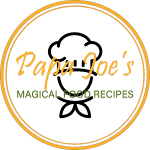Traditional Lancashire Hotpot Recipe - North of England's Favourite Dish
Lancashire hotpot is a hearty and satisfying dish that will warm you up on a cold night. It's made with tender lamb, potatoes, onions, and carrots, all cooked in a rich gravy. It's easy to make and you can use any leftover meat or vegetables you have in your fridge. Lancashire hotpot is a traditional dish from the north of England, but it's popular all over the country. It's a great way to enjoy a cozy and comforting meal with your family or friends.
Prep Time: 10 minutes.
Cook Time: 2 hours 15 minutes.
Serves: 5.
Calories per Serving: 402 kcal.
Here's how to make it:
Ingredients:
- 1 tbsp butter.
- 1 tbsp vegetable oil.
- 500 g (1.1 lbs) lamb not too lean - neck is best, but shoulder works well too, cut into bite-size chunks.
- 2 brown onions peeled and sliced thinly.
- 1 heaped tbsp plain (all-purpose) flour use gluten-free plain flour if required.
- 480 ml (2 cups) hot chicken or vegetable stock water with a couple of stock cubes is fine - or use bouillon for gluten free.
- 2 bay leaves.
- ½ tsp salt.
- ½ tsp ground black pepper.
- 1 tbsp Worcestershire sauce (use a gluten free version if required).
- 3 medium-sized carrots peeled and cut into chunks.
- 680 g (1.5 lbs) potatoes peeled and sliced to 2-3mm thick (floury potatoes such as maris pipers work best).
- 1 tbsp melted butter for brushing.
- ¼ tsp dried thyme.
Instructions:
- Preheat the oven to 170C/325F (fan).
- Melt the butter and vegetable oil in a medium sized casserole or sauce pan and fry the lamb pan until lightly browned all over (about 3-4 minutes). Spoon the lamb into a bowl, then add the onions to the pan and cook for 3-4 minutes, stirring regularly, until soft.
1 tbsp butter,1 tbsp vegetable oil,500 g (1.1 lbs) lamb,2 brown onions - Add the lamb back in, then stir in the flour, cooking for a minute. Add in the stock, bay leaves, salt, pepper, and Worcestershire sauce. Give everything a stir, bring to a gently bubble. Then place a lid on it and cook in the oven for 30 minutes. 1 heaped tbsp plain (all-purpose) flour,480 ml (2 cups) hot chicken or vegetable stock,2 bay leaves,½ tsp salt,½ tsp ground black pepper,1 tbsp Worcestershire sauce
- After 30 minutes, stir in the carrots. At this point, you can transfer the contents of the pan to a casserole or pie dish if you wish (I moved mine to a 25cm diameter pie dish). Top with the sliced potatoes. Start from the outside, and layer the potatoes, moving towards the centre.
3 medium-sized carrots,680 g (1.5 lbs) potatoes - Brush the top of the potatoes with the melted butter and sprinkle on the dried thyme. Cover with a lid or foil and place back in the oven for 1 hour.
1 tbsp melted butter for brushing,¼ tsp dried thyme - After an hour, turn the oven up to 200C/400F (fan) and remove the lid. Cook for a further 30 minutes until the potatoes are browned and crisp on top.
- Take out of the oven, and leave to rest for 5 minutes or so (it will be very hot), then serve with some green veg.
Origin of The Traditional Lancashire Hotpot
The Lancashire Hotpot is a traditional stew that originated in Lancashire, in the North West of England. The dish consists of lamb or mutton and onion, topped with sliced potatoes, and slowly baked in a pot at a low heat.
The term "hotpot" initially referred to a hot drink – a mixture of ale and spirits, or sweetened spiced ale in the 17th century. The term began to mean a meat stew in the 19th century. The dish was served in Liverpool in 1842 and was depicted as the most prized dish among cotton workers in a northern town in Elizabeth Gaskell's 1854 novel North and South.
The Lancashire Hotpot is thought to have originated during the cotton industry in the 19th century. It was a simple meal that would have been left to cook slowly all day, ready for the hungry cotton workers at the end of their shift. The dish was often made with mutton and would invariably have been left to cook with a lamb bone still in the dish for added flavor. The meat was often bulked out more with oysters, which were very cheap in the 19th century.
Today, the recipe usually calls for a mix of mutton (nowadays more frequently lamb) and onions covered with sliced potato, and slowly baked in a pot containing stock or sometimes water. Some early recipes add lamb kidneys or oysters to the dish; it is traditionally served with pickled red cabbage.
If you like or used this recipe then please leave a comment, let us all know about your experience and any tip you have to offer.

